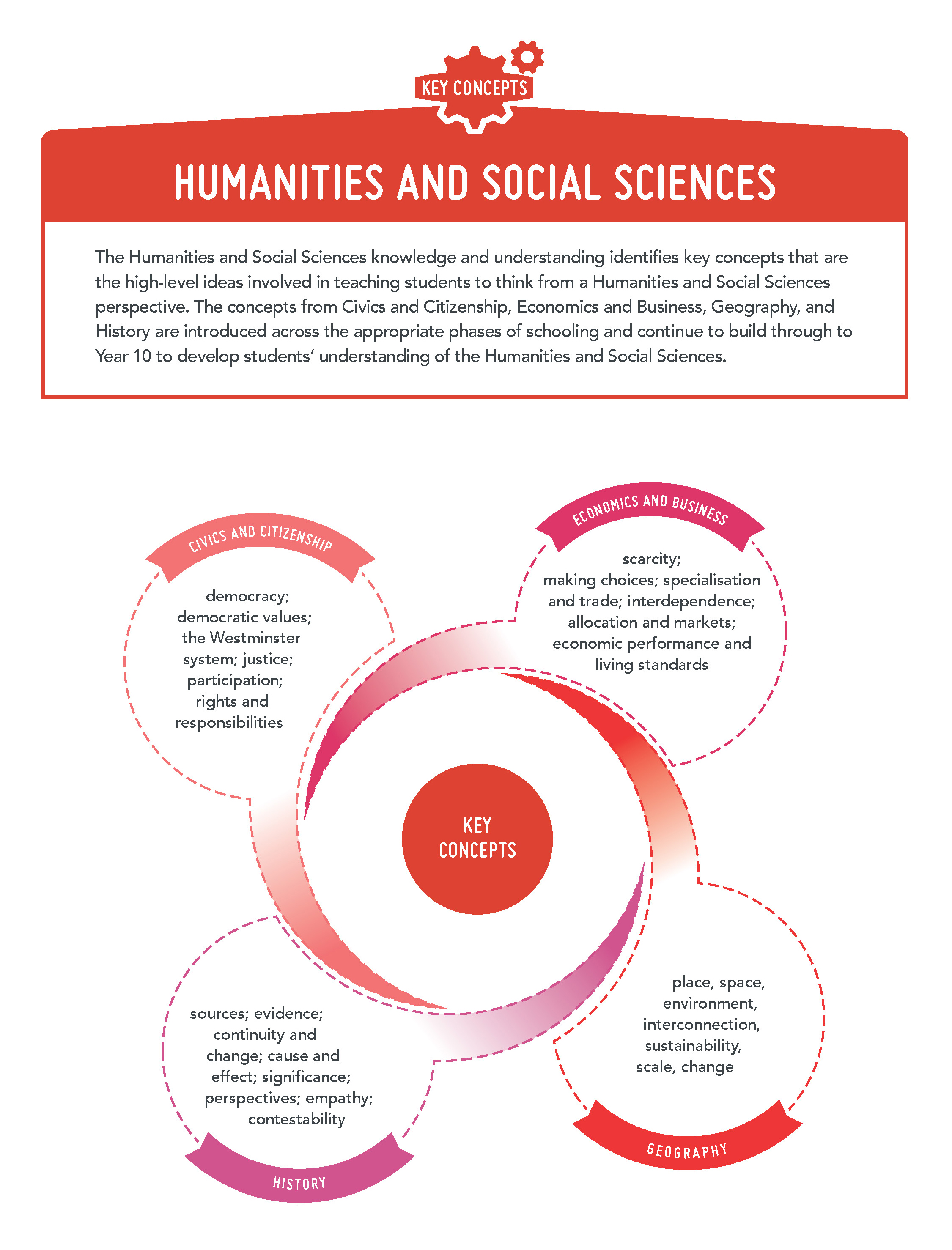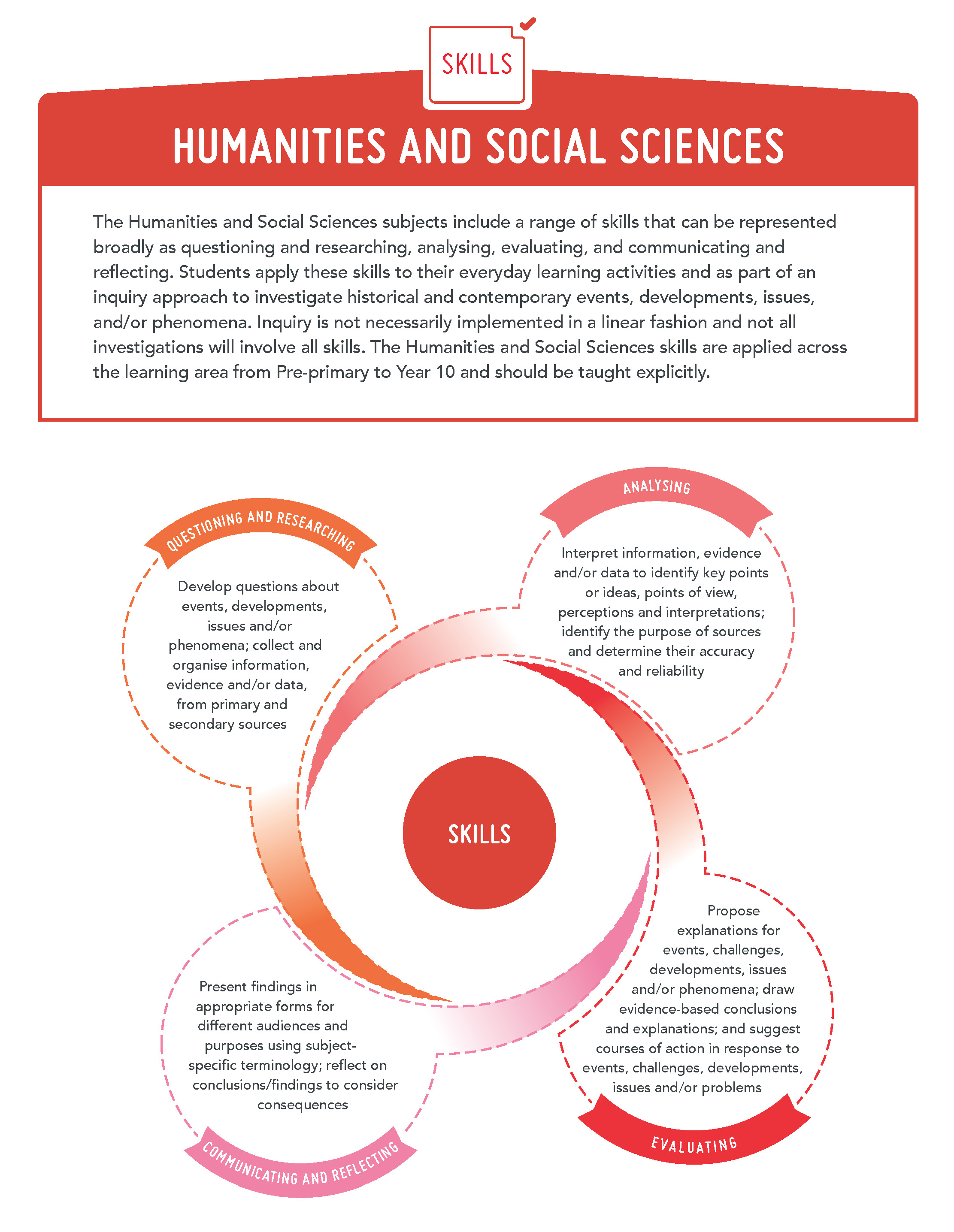Organisation
Content structure
The Humanities and Social Sciences learning area comprises four subjects. Each subject is organised into two interrelated strands: Knowledge and understandings and Humanities and Social Sciences skills.
History and Geography commence in Pre-primary. Civics and Citizenship is introduced in Year 3 and Economics and Business in Year 5. All subjects continue through to Year 10.
Knowledge and understanding
Humanities and Social Sciences knowledge refers to the facts, principles, concepts, theories and models as developed in each of the subjects. This knowledge is dynamic and its interpretation can be contested, with opinions and conclusions supported by evidence and logical argument.
The key concepts are the high-level ideas involved in teaching students to think from a Humanities and Social Sciences perspective. Figure 1 identifies the key concepts for the learning area.
Humanities and Social Sciences understanding is the ability to see relationships between aspects of knowledge and construct explanatory frameworks to illustrate these relationships. It is also the ability to apply this knowledge to new situations or to solve new problems.
Humanities and Social Sciences skills
This strand includes a range of skills that are common to all four subjects. These skills can be taught discretely or as part of an inquiry approach. Inquiry is not necessarily implemented in a linear fashion and not all investigations will involve all skills. Moreover, there may be different entry points where the skills are employed as part of an inquiry process. Figure 2 illustrates the Humanities and Social Sciences skills.
Relationship between the strands
The two strands are to be integrated in the development of a teaching and learning program. The knowledge and understanding strand provides the content focus through which particular skills are to be developed. Following Pre-primary, the sequencing and description of the skills are in two-year bands (1–2, 3–4, 5–6, 7–8, 9–10). This may assist in multi-age programming by providing a common skill focus for the teaching and learning of the knowledge and understanding content.
Year level descriptions
Year level descriptions provide an overview of the key concepts addressed, along with core content being studied at that year level. They also emphasise the interrelated nature of the two strands and the expectation that planning will involve integration of content from across the strands.
Content descriptions
Content descriptions set out the knowledge, understanding and skills that teachers are expected to teach and students are expected to learn. They do not prescribe approaches to teaching. The core content has been written to ensure that learning is appropriately ordered and that unnecessary repetition is avoided. However, a concept or skill introduced at one year level may be revisited, strengthened and extended at later year levels as needed.
Additional content descriptions are available for teachers to incorporate in their teaching programs. Schools will determine the inclusion of additional content, taking into account learning area time allocation and school priorities.
The additional content will not be reflected in the Achievement Standard.
Overviews
In History, the overview content in Years 7 to 10 identifies important features of the historical period. The overview is not intended to be taught in depth.
Achievement standards
From Pre-primary to Year 10, achievement standards indicate the quality of learning that students should typically demonstrate by a particular point in their schooling. An achievement standard describes the quality of learning (e.g. the depth of conceptual understanding and the sophistication of skills) that would indicate the student is well-placed to commence the learning required at the next level of achievement.
Glossary
A glossary is provided to support a common understanding of the key terms and concepts included in the core content.

 Humanities & Social Sciences Scope and Sequence
Humanities & Social Sciences Scope and Sequence
